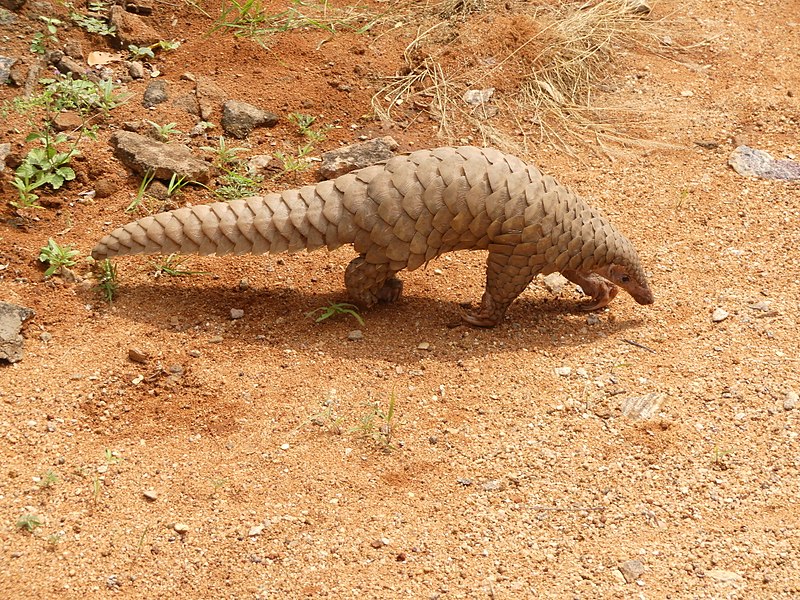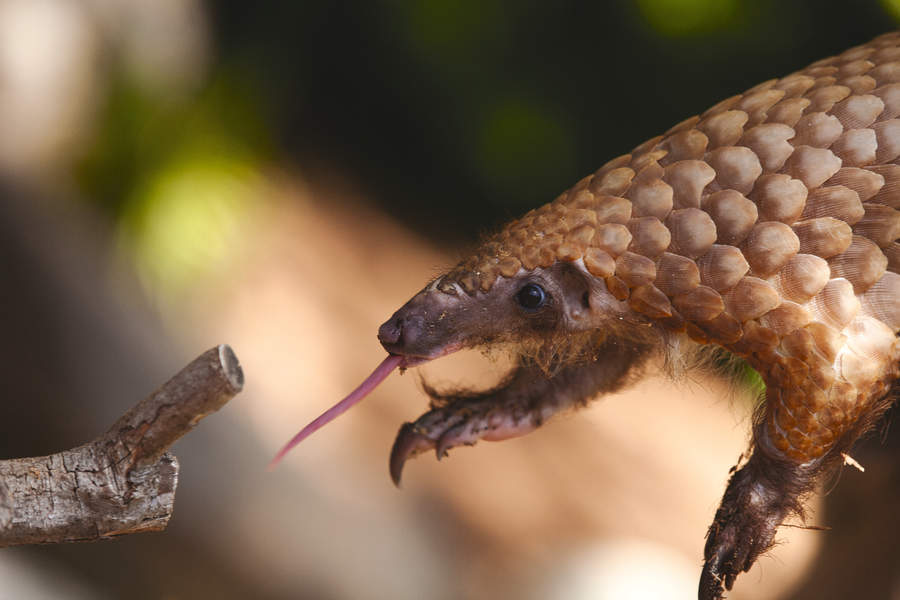What is a pangolin?
by Ailsa Harvey · 08/10/2019
Find out why these scaly creatures continue to fascinate multiple cultures

Picture a pinecone with waddling legs, or imagine a moving artichoke, and you have the general appearance of a pangolin. These creatures are the only mammals in the world covered in scales. Though they seem similar to anteaters or armadillos, they are in fact more closely related to true carnivores such as cats, and they belong to their own order. Four pangolin species live in Asia, and another four inhabit Africa. You can tell them apart because the Asian ones have bristles between their scales.
The scales themselves are made of keratin, the same substance found in our fingernails. This armour offers strong protection. Pangolin comes from the Malay word pengguling, meaning ‘something that rolls up’, and that’s precisely what they will do when in danger. Pangolins can roll themselves up into an almost impenetrable ball, and female pangolins will roll vulnerable young babies right up inside with them. The edges of the scales are very sharp. Pangolins can use them to slice off a finger or a predator’s nose – anything that tries to go poking around in between them.
These animals are found in sandy areas of tropical and flooded forests, as well as savannas. Some pangolins live only on the ground, while others also spend time up in the trees. All are equipped to dig; using their stout front legs and strong claws to tunnel through the ground, kicking loose soil out vigorously behind them. During the day they mostly shelter from the sunlight; but although capable of digging their own burrows, pangolins prefer to occupy abandoned homes.
At night these solitary creatures go in search of insects. They have poor vision and hearing but a keen sense of smell. Once they have located a suitable meal, they tear apart termite mounds or excavate entire ant colonies. If they don’t finish a meal in one sitting, they can patch up the hole and come back for the rest of the feast later.
Protecting pangolins

Like many animals, pangolins are affected by habitat loss, but the main danger they face is illegal poaching for human consumption and the use of their body parts in traditional medicines. Each year, tens of thousands of pangolins are killed to satisfy the need for bushmeat and the use of their scales in folk remedies. They are the most poached and trafficked mammals in the world.
In China and Vietnam, the flesh of pangolins is considered a delicacy, and the scales of pangolins have been used in Chinese medicines for hundreds of years. But with Asian pangolin populations plummeting, animal traffickers have begun to target African species to make up the difference, putting all of the species at significant risk. There are many groups working to protect pangolins, including authorities and researchers. Yet the task is extremely difficult – the going rate for a pangolin has soared to over $200 (around £150) per kilogram, and an estimated 41,000-60,000 wild pangolins were taken in 2011 alone. An international trade ban on pangolins was established last year, but conservationists say that it is not being enforced strictly enough.
This article was originally published in How It Works issue 102, written by Joe Levit
For more science and technology articles, pick up the latest copy of How It Works from all good retailers or from our website now. If you have a tablet or smartphone, you can also download the digital version onto your iOS or Android device. To make sure you never miss an issue of How It Works magazine, subscribe today!




